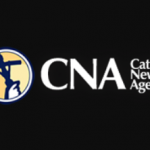
ACI Prensa Staff, Aug 4, 2023 / 07:00 am (CNA).
Pope Francis has received a posthumous letter from the young Spanish Carmelite Pablo María de la Cruz who entered the religious order with special permission “in articulo mortis” (at the point of death) and who died on July 15 at the age of 21.
Eva Fernández, the Vatican correspondent for COPE, the radio station of the Spanish Bishops’ Conference, was asked to deliver the letter to the pontiff along with a holy card designed by the priest for his wake.
The pope, on board the plane en route to the World Youth Day (WYD) in Lisbon, Portugal, let the journalist know that he was aware of the story of the young Spaniard.
In the letter, the Carmelite expressed to the pope his desire to have participated in WYD in person, but in the event that he died before, as has happened, he pledged his prayers and support:
“In that case, I hope he [God] allows me to lend you a hand — and all the better — from heaven, ‘stirring things up’ and celebrating, as you say so well.”
Regarding his ailment, the young man told Pope Francis that “between ups and downs, better and worse days, and with much purification through illness, today I look at my life and I can confess that I have been and am happy.”
“I have discovered that the center of my life is not illness, but Christ,” the young man emphasized in his letter while recalling what had been repeated to those around him in recent months: “Through suffering in illness I have found God, and through death in sickness, I will go to him. And for that I thank him.”
Love on fire
The Carmelite also shared with the pope some reflections on the apostolic zeal of youth: “I know from experience that no one can put out the interior fire that a young man in love with Jesus can have. I ask the Lord that this fire of God’s love burn in Lisbon.”
“How I would like young people to know Jesus, my beloved! He has given me so much, he has consoled me so much, he has made me so happy! Physically I’m worn out, but the communion of saints will allow me to participate with you in a deeper way and not less,” the young Carmelite wrote.
This story was first published by ACI Prensa, CNA’s Spanish-language news partner. It has been translated and adapted by CNA.
If you value the news and views Catholic World Report provides, please consider donating to support our efforts. Your contribution will help us continue to make CWR available to all readers worldwide for free, without a subscription. Thank you for your generosity!
Click here for more information on donating to CWR. Click here to sign up for our newsletter.





Leave a Reply